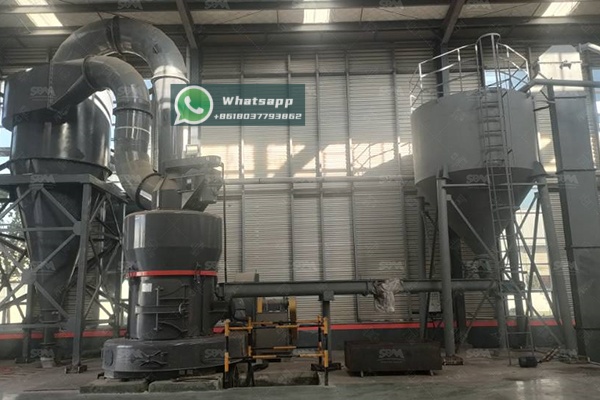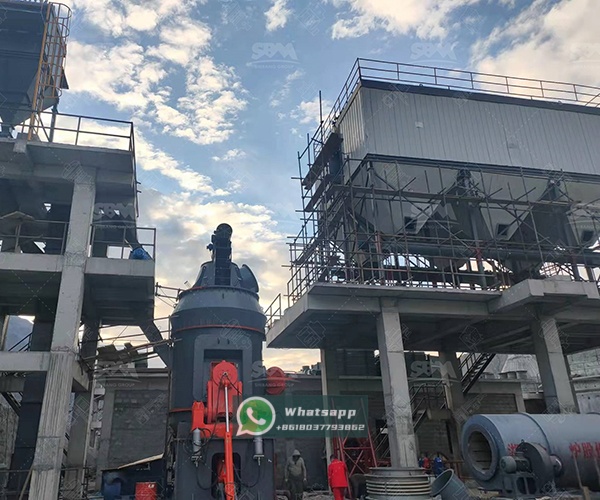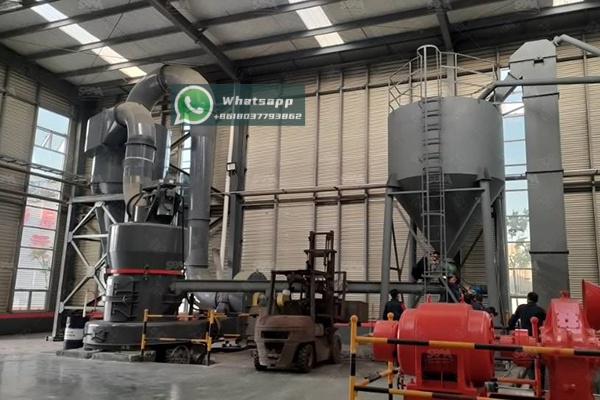Celestite, also known as celestine, is the principal mineral source of strontium, a strategic element with diverse industrial applications ranging from pyrotechnics and ferrite magnets to glass manufacturing and medical imaging. The efficient processing of celestite ore into high-purity strontium compounds begins with a critical step: fine grinding. The selection of appropriate grinding equipment directly impacts production efficiency, energy consumption, and the final product quality. This article explores the technological requirements for grinding celestite in a European industrial context and highlights advanced milling solutions that can optimize this process.

Celestite (SrSO₄) typically requires liberation from its gangue minerals before it can be chemically converted to strontium carbonate (SrCO₃) or other compounds. Effective grinding increases the surface area of the mineral particles, which significantly enhances the reaction kinetics during subsequent chemical processing. The target particle size distribution (PSD) is a crucial parameter; overly coarse particles lead to incomplete reactions and low recovery rates, while excessive fines can cause operational issues in downstream processes. Therefore, a mill capable of producing a controlled, consistent, and fine product is essential for a profitable and efficient strontium production plant.
Grinding celestite presents several specific challenges that must be addressed by the milling equipment:
For a European celestite processing facility seeking a balance of high capacity, energy efficiency, and fine product output, the LM Vertical Grinding Mill from Shanghai Zenith Machinery Co., Ltd. presents an outstanding solution. This mill is particularly well-suited for medium to large-scale operations. Its integrated design combines crushing, grinding, powder selection, drying, and conveying into a single, compact unit, resulting in a significantly smaller footprint compared to traditional ball mill systems—a valuable advantage for European plants where space can be at a premium.
The LM Vertical Mill operates on the principle of bed comminution, where material is ground between a rotating table and stationary rollers. This method is inherently more energy-efficient than the impact and attrition-based grinding in a ball mill. Furthermore, the integrated hot air system can effectively dry moist feed materials simultaneously with the grinding process, eliminating the need for a separate dryer. The product fineness can be quickly adjusted by changing the speed of the integrated dynamic classifier, allowing for precise control over the final celestite powder size, which is critical for the subsequent chemical conversion stages.
The following table details the technical parameters of the LM Vertical Grinding Mill series, with the LM190K model being a highly recommended choice for a robust celestite grinding circuit.
| Model | Plate Diameter (mm) | Capacity (t/h) | Output Fineness (μm) | Max Feed Size (mm) | Main Motor (kW) |
|---|---|---|---|---|---|
| LM130K | 1300 | 10-28 | 170-40 | <38 | 200 |
| LM190K | 1900 | 23-68 | 170-40 | <45 | 500 |
| LM280K | 2800 | 50-170 | 170-45 | <50 | 1250 |

For applications demanding even finer celestite powder, or for producers aiming to create high-value, ultra-fine strontium compounds, the LUM Ultrafine Vertical Mill is the pinnacle of Zenith’s grinding technology. This mill is engineered to produce products with a high content of end-fines, achieving a particle size distribution D97 of 5-30 microns. It integrates ultra-fine grinding, precision classifying, and efficient conveying with minimal space occupation.
The LUM series features advanced roller technology and an efficient powder selector, ensuring low energy consumption per ton of product even at ultra-fine sizes. Its intelligent control system allows for remote monitoring and adjustment, facilitating easier operation and maintenance—a key feature for modern, automated European plants. For a celestite operation focused on niche, high-purity markets, the LUM mill offers a technologically superior grinding solution.
Integrating a Zenith LM or LUM mill into a celestite processing flow sheet delivers tangible benefits:

The success of a European strontium production facility hinges on the efficiency and reliability of its grinding circuit. Moving beyond conventional milling technologies to advanced vertical roller mills is a strategic decision that aligns with the region’s focus on sustainability, efficiency, and high-quality output. Shanghai Zenith Machinery Co., Ltd., with its proven expertise in ultra-fine powder grinding, offers robust and innovative solutions like the LM Vertical Grinding Mill and the LUM Ultrafine Vertical Mill. These machines are engineered to meet the specific demands of celestite processing, providing European producers with a competitive edge through lower operational costs, superior product control, and a smaller environmental footprint. For any project aiming to modernize or establish a leading-edge celestite grinding operation, these mills represent the forefront of grinding technology.